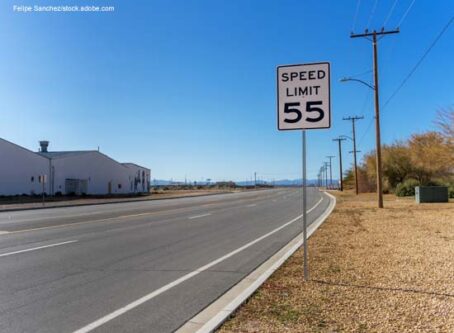Wisconsin bill would give state’s largest city red-light cameras
A new bill in the Wisconsin House would allow the city of Milwaukee to use red-light and speed cameras to ticket drivers.
State law now prohibits the use of automated enforcement tools.
Sponsored by Rep. LaKeshia Myers, D-Milwaukee, the bill would add the city to the more than 500 communities around the country to employ red-light or speed cameras to nab drivers who disobey traffic rules. Specifically, her bill would authorize the city of Milwaukee to use up to 75 red-light and speed cameras.
Myers said the change is needed to address concern about reckless driving in the city. She added that law enforcement needs help from the state to address the issue.
“It is incumbent on policymakers to use every available tool to help alleviate this problem, and red-light cameras are one such mechanism that can aid in that process,” Myers said in a news release.
The Milwaukee Common Council first must enact an ordinance to permit the Milwaukee Police Department to use the ticket devices.
The bill specifies that tickets could only be issued for speeding by at least 20 mph over the posted limit. Violators would face fines between $40 and $100 – the same as current traffic signal violations.
The program would have a five-year sunset date.
A 2017 study by Case Western Reserve University found that red-light cameras changed the types of wrecks occurring but not the frequency of wrecks or injuries.
Highway safety initiative
One bill headed to the governor’s desk is intended to protect first responders from unnecessary and preventable danger while on the scene of vehicle incidents.
Specifically, AB297 would create an emergency response area, similar to a work zone. In the affected area, fines would double for speeding, reckless driving, and other traffic citations. Additionally, drivers would be prohibited from using a cellphone while driving through an emergency response area.
The affected area would be defined as the section of roadway within 500 feet of emergency vehicles.
“Tragically, collisions with emergency or roadside response vehicles or workers responding to an emergency due to distracted and reckless driving are not uncommon,” stated Rep. Amy Loudenbeck, R-Clinton. “Sometimes these collisions result in injury or death, with only minor repercussions for the driver.”
If a driver causes bodily harm to workers engaged in highway maintenance, construction, utility work, emergency response, or roadside response, they would face up to $10,000 fines and/or nine months in jail.
The Wisconsin Department of Transportation would be required to conduct an advertising campaign to notify the public about the rule change. LL









